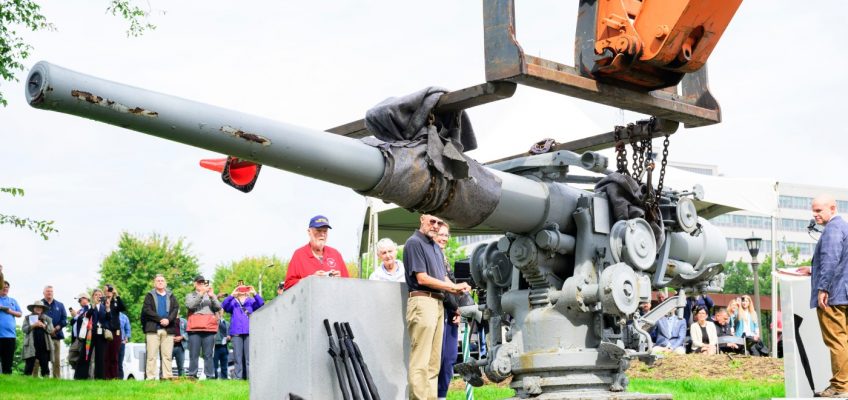With a total of 1,940,869 tickets sold across 12 days, this year’s Minnesota State Fair beat out a number of previous years’ attendance to become the fifth-busiest Fair and the best-attended since before the pandemic.
Last year’s Fair previously held the fifth-busiest spot, with 1,925,904 total tickets sold.
Despite a modestly higher total attendance, this year’s Fair only had one record-breaking day, compared to five last year. Only Monday, Aug. 25, broke an attendance record — and barely so, at that — with 145,022 people showing up to the Fairgrounds, beating the 2017 record by 518 people.
The all-time busiest Fairs were in 2019 and 2018, when total attendance surpassed 2 million.
Good weather
Weather-wise, this year’s Fair was one of the nicest in recent memory. Most days had high temperatures in the upper 70s. No day for the event this year topped 90 degrees, and only two reached highs in the 80s. The Fairgrounds also saw very little rainfall this year: Apart from a trace of precipitation on Aug. 26, only .08 inch of rain fell on Aug. 22, not far off from the all-time driest 2003 Fair with .02 inch of rain.
Last year, tropical humidity and stormy weather on two weekdays of the Fair sunk attendance for those days to about half the usual levels. One particularly bad thunderstorm last year forced the Happy Together Tour show at the Grandstand to be called off and caused overnight damage on the Fairgrounds.
No major crimes were reported at the Fairgrounds this year.
The main gate on Snelling Avenue was closed for a little under an hour and a half on Aug. 30 during a planned march and rally organized by Black Lives Matter Twin Cities Metro. Fairgoers were directed to other gates during the closure, which did not affect activities inside the Fairgrounds.
In a statement Tuesday following the announcement of total 2025 Fair attendance numbers, CEO Renee Alexander invoked the recent shooting at Annunciation Catholic School in Minneapolis, which took place during the Fair.
“Even in the shadow of heartbreak, the fair showed its true purpose: bringing Minnesotans together,” she said in the statement. “Over the 12 days, the weather created a beautiful backdrop for people to share traditions, discover new favorites, and celebrate the spirit of our state.”
Admission, other costs
Admission prices to the Fair have risen considerably within the past five years. Tickets for this year’s Get-Together ran $20 for adults, compared to $14 in 2018 and $15 in 2019.
Some Grandstand shows are getting more expensive, too. Most tickets are in the $50 to $100 range, and since 2023, one or two acts a year have charged over $200 for the best seats in the house. This year’s Def Leppard concert, for which regular tickets ranged from $77 to $292, was the priciest show in Fair history — and, as our critic Ross Raihala points out in his review, more than triple the cost of Def Leppard tickets at the Grandstand 25 years ago.
For what it’s worth: At the 1925 Fair, 100 years ago, the admission price was 75 cents, or about $13.70 in today’s money. Total attendance for what was then an eight-day Fair was reported at 441,232, making average daily attendance less than a third of this year’s Fair.
With Labor Day 2026 not falling until Sept. 7 — the latest that the first-Monday holiday can be — next year’s State Fair is set to begin Aug. 27.
A giant green inflatable alien is carried thought the crowd on Judson Ave. at the Minnesota State Fair in Falcon Heights on Friday, Aug. 23, 2025. (John Autey / Pioneer Press)
2025 State Fair by the numbers
The Fair’s creative activities and agricultural competitions, from livestock to flowers to canned fruits, accepted more than 35,000 entries and awarded about $2 million in prize money, according to Fair officials. The popular crop art exhibition drew 449 entries across all classes and age groups.
In the Fine Arts Center, out of 2,836 artworks submitted for consideration, 336 pieces were exhibited during the Fair.
At the Miracle of Birth Center, 142 animals were born, including 10 calves, 106 piglets and 26 lambs.
The largest pumpkin exhibited at this year’s Fair weighed in at 1,511.0 pounds and was shown by Alexander Bogie of Ham Lake. (It was a clear winner: No other pumpkin even topped 1,000 pounds.)
Daily attendance
And here are the daily attendance numbers, with comparisons to the 2024 Fair:
• Thursday, Aug. 21: 137,148 (1,727 fewer than last year).
• Friday, Aug 22: 153,988 (17,245 fewer than last year).
• Saturday, Aug. 23: 198,863 (14,299 more than last year).
• Sunday, Aug. 24: 184,176 (49,532 more than last year).
• Monday, Aug. 25: 145,022 (64,476 more than last year; a new record for the day).
• Tuesday, Aug. 26: 132,553 (7,776 more than last year).
• Wednesday, Aug. 27: 114,932 (30,599 fewer than last year).
• Thursday, Aug. 28: 125,924 (44,693 more than last year).
• Friday, Aug. 29: 180,520 (45,001 fewer than last year).
• Saturday, Aug. 30: 222,800 (15,722 more than last year).
• Sunday, Sept. 31: 194,501 (61,514 fewer than last year).
• Monday, Sept. 1: 150,442 (25,447 fewer than last year).
Concert review: A Taylor Swift cover band had kids singing and dancing at the Grandstand
The Minnesota State Fair by the numbers — in photos
Concert review: Nelly and Ja Rule turn the Grandstand into the biggest party in town
Made in St. Paul: On and off the Fairgrounds, Lip Esteem aims to build community with lipstick
Concert review: The Avett Brothers rock up the folk at the State Fair Grandstand




